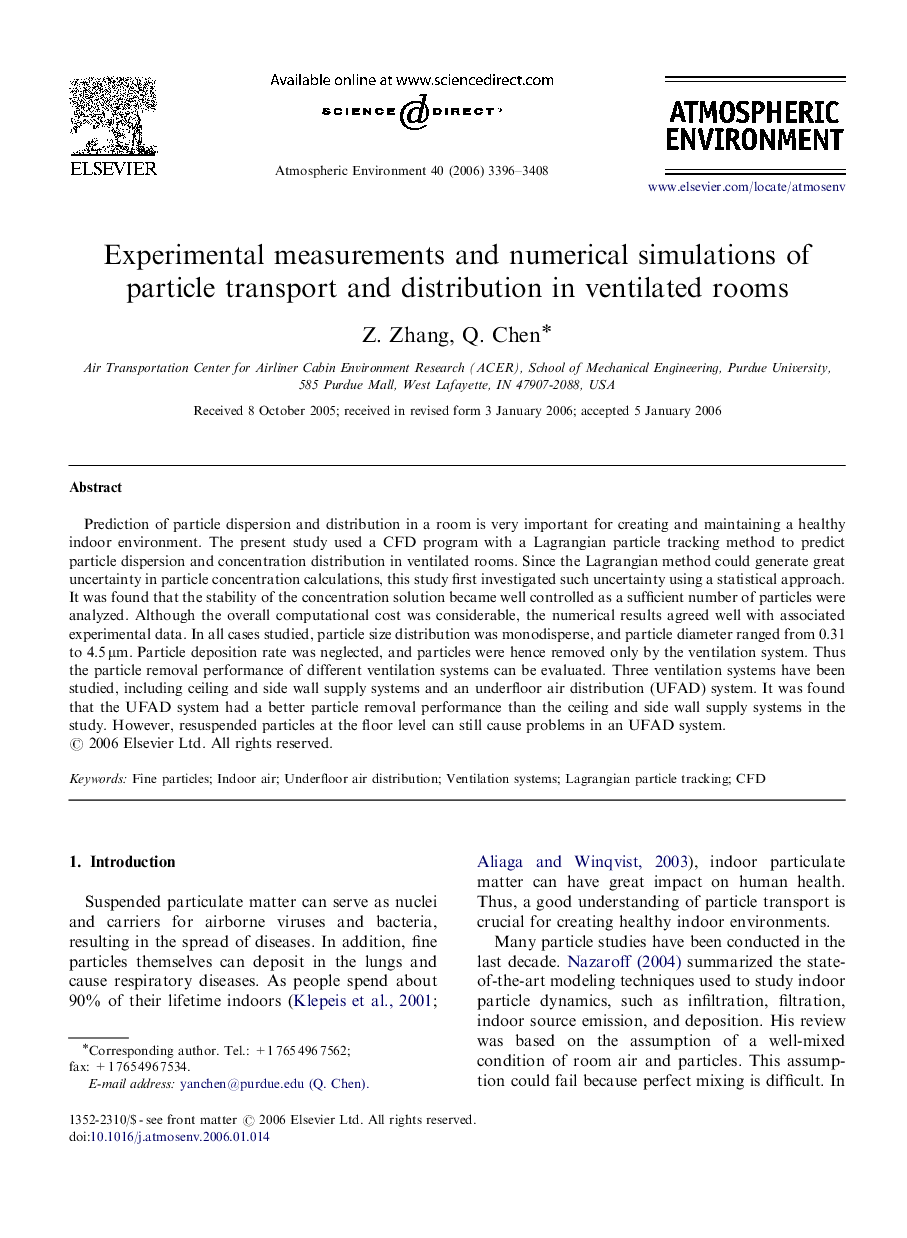| Article ID | Journal | Published Year | Pages | File Type |
|---|---|---|---|---|
| 4444840 | Atmospheric Environment | 2006 | 13 Pages |
Prediction of particle dispersion and distribution in a room is very important for creating and maintaining a healthy indoor environment. The present study used a CFD program with a Lagrangian particle tracking method to predict particle dispersion and concentration distribution in ventilated rooms. Since the Lagrangian method could generate great uncertainty in particle concentration calculations, this study first investigated such uncertainty using a statistical approach. It was found that the stability of the concentration solution became well controlled as a sufficient number of particles were analyzed. Although the overall computational cost was considerable, the numerical results agreed well with associated experimental data. In all cases studied, particle size distribution was monodisperse, and particle diameter ranged from 0.31 to 4.5 μm. Particle deposition rate was neglected, and particles were hence removed only by the ventilation system. Thus the particle removal performance of different ventilation systems can be evaluated. Three ventilation systems have been studied, including ceiling and side wall supply systems and an underfloor air distribution (UFAD) system. It was found that the UFAD system had a better particle removal performance than the ceiling and side wall supply systems in the study. However, resuspended particles at the floor level can still cause problems in an UFAD system.
